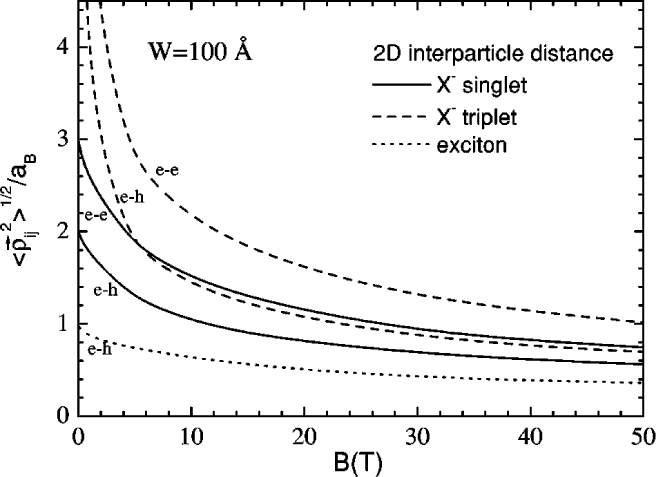
|
The 2D average interparticle distance versus the magnetic
field for the exciton, and the singlet and triplet states of the
charged exciton in a quantum well of width 100 Å.
|
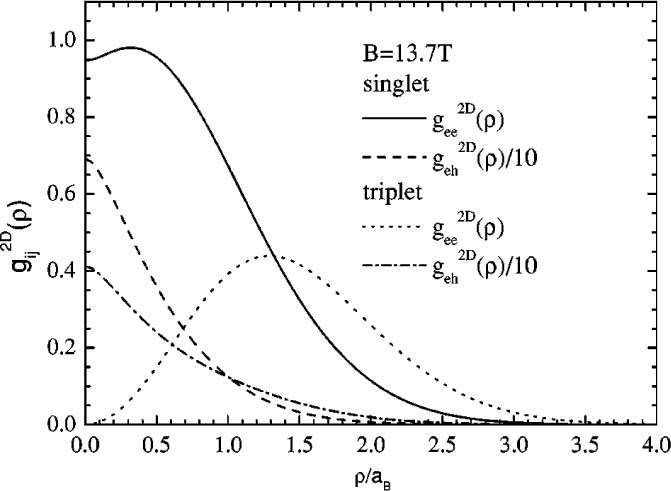
|
The 2D pair correlation function versus the magnetic field for the exciton and the spin-singlet and spin-triplet states of a
charged exciton in a 100 Å wide quantum well.
|
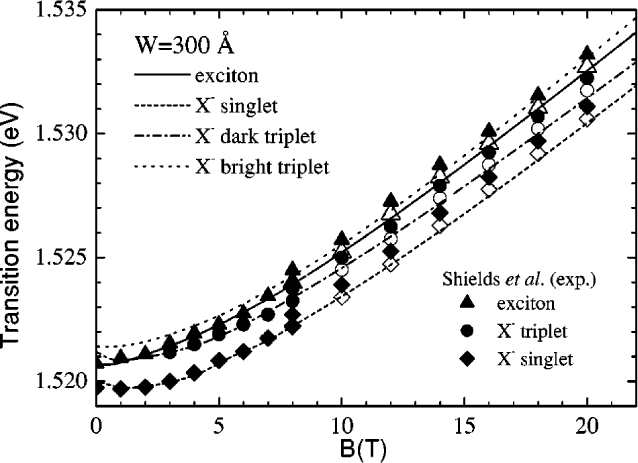
|
Comparison between the experimental and theoretical transition energies for charged excitons and excitons in a 300 Å
wide quantum well. The open symbols are the experimental results for B > 8 T shifted by 0.5 meV.
|
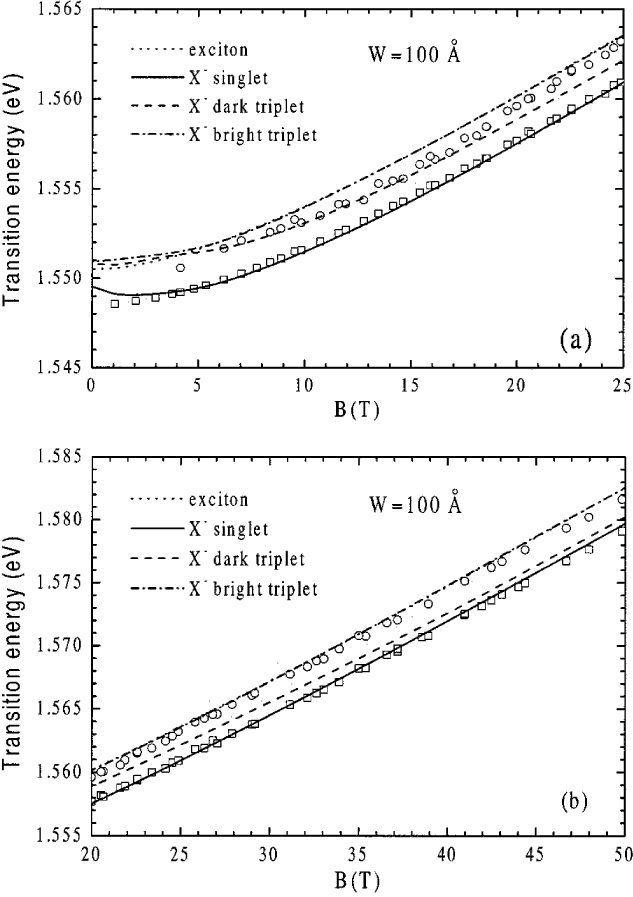
|
Comparison between the experimental and the theoretical transition energies for charged excitons and excitons in a 100 Å
wide quantum well. For clarity, (a) the low magnetic field region and (b) the high magnetic field region are shown separately.
| The symbols are the experimental results.
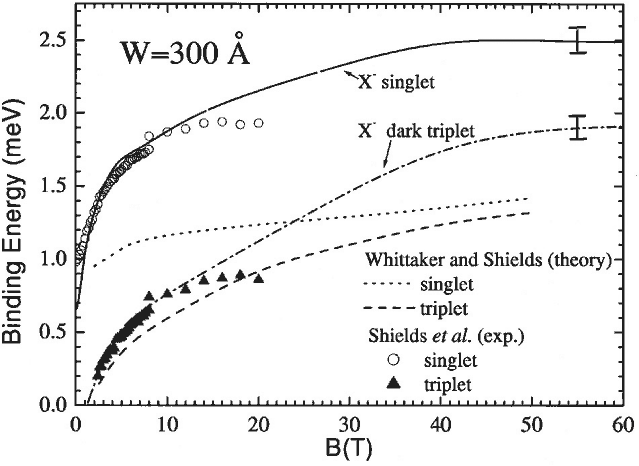
|
The binding energy of a charged exciton in a 300 Å
|
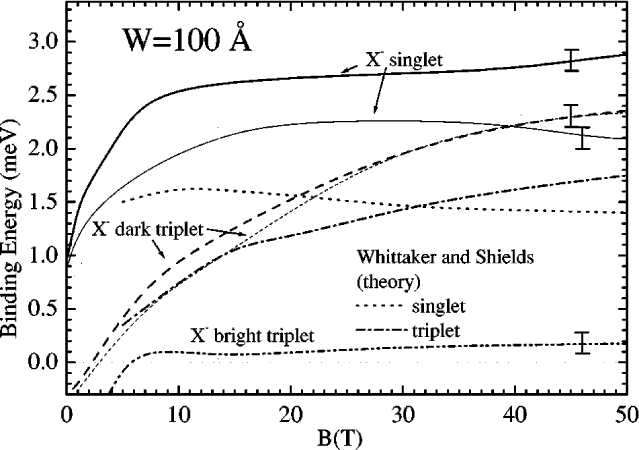
|
The binding energy of a charged exciton in a 100 Å wide quantum well calculated using the symmetric hole mass approximation
(thick curves) and the asymmetric hole mass approximation (thin curves).
|
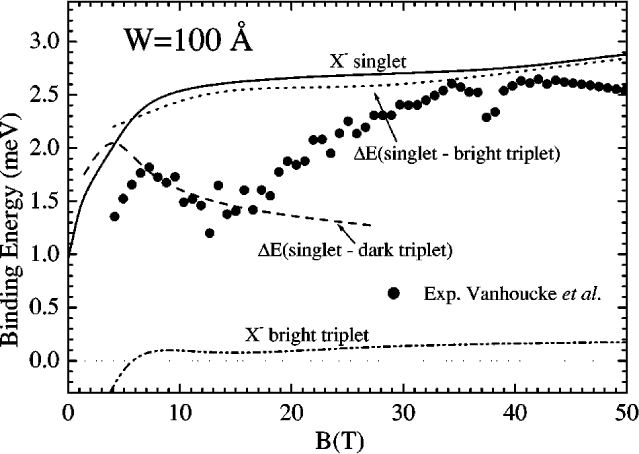
|
Comparison of the difference in energy between the
upper and lower s - transition lines (symbols) with our
theoretical binding energy for the negative trion singlet state (solid curve), the energy difference between our theoretical dark triplet
and singlet states (dashed curve), and the energy difference between our bright triplet and singlet states (dotted curve).
|






